How To Plan For
New Kennel Flooring
Decide the final floor treatment before you start
It is not necessary to select the actual vendor or specific product, although that is the best idea. At a minimum you should decide the type of floor treatment you are going to have: penetrating sealer, surface build sealer, gray concrete, acid stained, decorative epoxy, neat epoxy, paint, tile, polished concrete, resilient flooring and so on.
Different floor treatments have different requirements.
The placing and finishing of a concrete slab should be done with the final treatment in mind so you do not have to do extra work or find that what you may have wanted is not realistic given the way your concrete was poured and finished. For example: A broom finished concrete floor does not produce an acid stain result as pretty as a power troweled finish will.
You can avoid budget issues.
The majority of construction projects end up costing more than planned. It always costs more to correct problems than to do it right in the first place. It goes beyond the price of the floors or correcting the problem, because once you are opened and operating, closing down to repair or correct problems ends up costing you lost income. Perhaps the most compelling reason to think through and decide on flooring issues very early in the process is so that you can budget adequate money for the most cost beneficial flooring. When you plan ahead and focus on "cost" instead of "price" you can be in the position of including the necessary money in your budget. It is easier to pay off flooring in a long term mortgage than it is to scrape that money out of your operating budget.
How to Make the Decision About Floor Treatment
Realize there is no perfect solution.
Every option you choose will have some pros and some cons. Evaluating these will help you be more satisfied in the long run. Remember that most sales information wants you to believe that their solution is "perfect" and the discussion of pros and cons is typically absent in sales literature and sales pitches.
Decide if you are going to do it yourself or paying someone else.
Some floor treatment options can successfully be done by DIYers. Other choices really do require greater expertise to insure that the result is acceptable. For example, if you have never done a troweled epoxy floor, it is not a good idea to practice with your first one on your new kennel floor. Polyaspartics and polyureas, while very durable coatings, are not considered DIY products. My Kennel Kit can be applied by anyone who can follow simple instructions. Deciding this up front will allow you to eliminate some options that should clearly be installed by experienced people.
Know the difference between price and cost.
Price is how much you pay initially for the materials or products and the installation. Cost is how much you pay over time to maintain the floors. The cheapest way is not always the most cost effective way.
It's unwise to pay too much, but it is worse to pay too little. When you pay too much, you lose a little money - that is all. When you pay too little, you sometimes lose everything, because the thing you bought was incapable of doing the thing it was bought to do. The common law of business balance prohibits paying a little and getting a lot - it can't be done. If you deal with the lowest bidder, it is well to add something for the risk that you run. And if you do that, you will have enough. There is hardly anything in the world that someone can't make a little worse and sell a little cheaper - and people who consider price alone are this man's lawful prey.
john ruskin (1819-1900)
Know cosmetic enhancement of gray concrete costs more.
Changing the color of concrete isn't simple after it's poured. In order to change the color before pouring, you can pour integrally colored concrete. This involves adding liquid or powdered colorant to the concrete before it is poured and finished. This is the best and least costly option for gaining a pleasing look for concrete in kennels. While the initial price of colored concrete may be 25% higher than ordinary gray concrete, that increase in price should be compared to the price and more importantly the "cost" of maintaining concrete that has been colored by one of the available means after it was poured and finished as gray. Changing the natural color of concrete is going to be more expensive over the long run.
